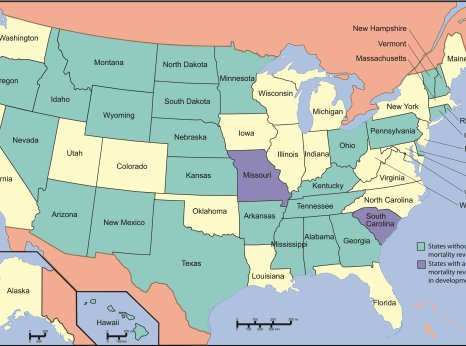USA: End The Use Of Military To Police Protests

Protesters took to the streets to confront federal agents conducting widescale, militarized workplace immigration raids on 6 and 7 June 2025 in the cities of Los Angeles and Paramount, California. US Immigration and Customs Enforcement (ICE) agents responded to these protests aggressively, including by using rubber bullets and tear gas against peaceful protestors. Following the second night of protests when some protesters threw rocks and other projectiles at ICE agents, President Trump announced that he was federalizing 2000 US National Guard troops and sending them into the city to suppress the protests. It is the first time since 1965 that a president has activated a state’s National Guard force without a request from that state’s governor. At that time, the military was deployed to protect civil rights protestors; the Trump administration has deployed the military to suppress protestors. A group of 22 Democratic Governors issued a statement declaring President Trump's actions “an abuse of power” and unlawful under the federal law authorizing such deployments. On 9 June, California Governor Gavin Newsom and the state of California sued the Trump administration to block its use of Marines and the state’s National Guard to enforce laws in the state, including by assisting federal officials with immigration enforcement.
Governors largely control the deployment of National Guard troops in their states. However, the memo issued by President Trump cites 10 U.S.C. 12406, which, in part allows the federal deployment of National Guard forces if “there is a rebellion or danger of a rebellion against the authority of the Government of the United States.” It also states that the president may call into federal service “members and units of the National Guard of any State in such numbers as he considers necessary to repel the invasion, suppress the rebellion, or execute those laws.” The incidents that have occurred fail to meet this threshold. Trump’s directive states, “To the extent that protests or acts of violence directly inhibit the execution of the laws, they constitute a form of rebellion against the authority of the Government of the United States.” Trump’s directive authorized the Secretary of Defense to “employ any other members of the regular Armed Forces as necessary to augment and support the protection of Federal functions and property in any number determined appropriate in his discretion.” On 9 June, following the fourth night of protests, the President ordered an additional 2000 California National Guard to deploy to the area and 700 US Marines were placed on “high alert” to be stationed near the Los Angeles to deploy if needed. The deployment of the Marines may risk violation of the Posse Comitatus Act, a federal law that generally prohibits the use of the military for domestic law enforcement purposes, with limited exceptions.
The memo is not location specific, authorizes protection of Immigration and Customs Enforcement (ICE) operations anywhere in the country where protests are occurring and pre-emptively authorizes the military to be deployed against anticipated, future protests. It says that troops can be sent to “locations where protest against functions are occurring, or are likely to occur based on current threat assessments and planned operations” regardless if there is any kind of violence. Importantly, in recent months, immigration raids have become increasingly militarized and led by masked immigration agents, often in unmarked uniforms and with unmarked vehicles, weapons, and acting without warrants. On 8 June, President Trump signalled that this was just the beginning of a much wider deployment, “We’re gonna have troops everywhere,” he said. Two days later, he stated that additional immigration raids will take place across the country and that any protests that occur will be met with “equal or greater force.” There are also nationwide protests planned on 14 June 2025 in opposition to a military parade that is taking place in Washington DC on that day to commemorate the 250th anniversary of the US army, as well as the president’s 79th birthday. On 10 June, Trump threatened anyone protesting the 14 June military parade, stating, "People that want to protest will be met with big force ...This is people that hate our country. They will be met with heavy force."
President Trump suggested deploying military forces in the same manner during his first term to suppress outbreaks of violence during the nationwide protests over the police murder of George Floyd in Minneapolis. In 2020, military helicopters were used to disperse peaceful protesters demonstrating against police violence near the White House in Washington, DC. Amnesty International documented widespread violations in the use of force by federal law enforcement agents during the protests. Military forces are generally not suitable for carrying out law enforcement tasks and should not be deployed to conduct law enforcement duties unless under exceptional and temporary circumstances, based on a clear needs assessment as to their added value in a concrete situation. In such a deployment, they are bound by the legal framework applicable to law enforcement, including international and domestic human rights law, and may carry out law enforcement functions only if they are properly instructed, equipped and trained to do so in a lawful, human rights compliant manner. They should be subject to civilian command, control and oversight at all times. Amnesty International is concerned about the use of military personnel in any such circumstance unless their deployment is to serve such a specific legitimate objective. Military personnel do not have any experience, training or equipment in crowd control manoeuvres and the policing of protests.